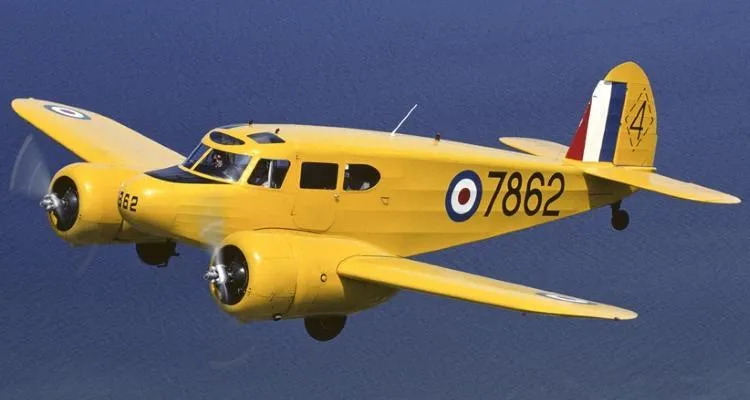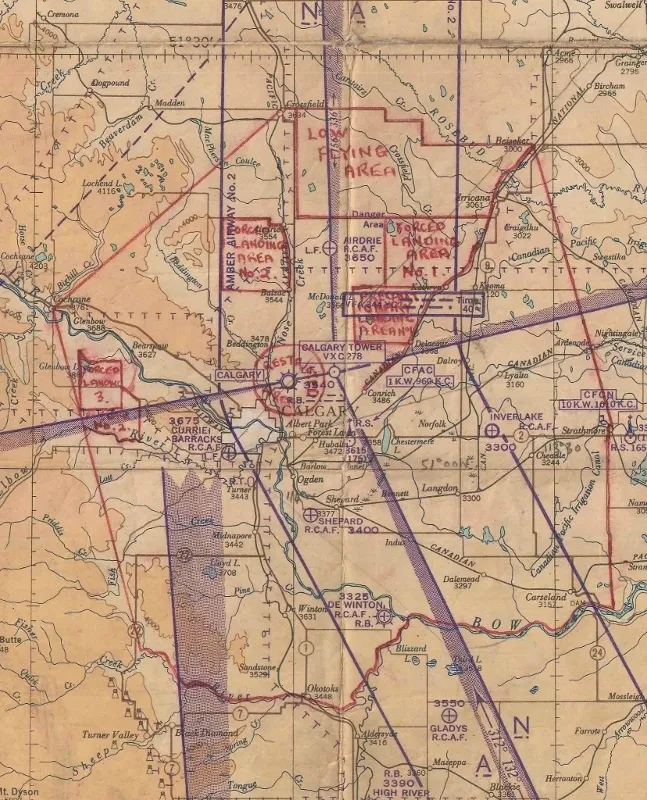Hardiman, James Valentine (Sergeant)
Killed in Flying Accident 1943-August-28


Birth Date: 1917-May-23
Born:
Parents: Mr. and Mrs. E. G. Hardiman
Spouse: Edna Mary Hardiman, of Kogarah, New South Wales, Australia
Home:
Enlistment:
Enlistment Date: unkown date
Service
RAAF
Unit
37 SFTS- Service Flying Training School (RAF)
Base
Calgary, Alberta, Canada
Rank
Sergeant
Position
Service Numbers
420664
This incident involved multiple aircraft:
- Harvard Mk. II Serial: AJ796
- Crane Mk. I Serial: 8127
All the above aircraft in the above list are referenced in this report.
Accident Card - Cessna Crane Mk. I serial:8127
This accident involved 2 aircraft on 1943-August-28. They are: Cessna Crane I s/n 8127, Harvard II s/n AJ796.
This accident involved 4 people. Ayton JL, Eckert MV, Hardiman JV, Major J
This accident had 3 fatalities. Leading Aircraftman Jack Major RAFVR Killed in Flying Accident service no:1339948 Harvard AJ796,Leading Aircraftman Mostyn Vaughan Eckert RAFVR Killed in Flying Accident service no:1350866 Crane 8127, Sergeant James Valentine Hardiman RAAF Killed in Flying Accident service no:420664 Crane 8127
Crane serial: 8127

Canadian Warplane Heritage Museum
The Cessna T-50 Crane was the RCAF version of the Cessna AT-17 Bobcat, a twin-engined advanced trainer designed and made in the USA during the Second World War. It served to bridge the gap between single-engined trainers and twin-engined combat aircraft.
First flown in 1939, the American-built Cessna Crane was developed as a five-seat, light transport civilian aircraft. It was originally intended to serve only a minor role within the BCATP (an initial 180 were ordered in 1940) until the Canadian-built Avro Ansons became available in greater numbers. This was the first large order that Cessna had received for one of its products. Eventually, more than 5,400 Cranes would be produced, of which 826 saw service with the RCAF. Cessna Cranes were used primarily to teach future bomber pilots, after they had received their initial training, to fly multi-engined aircraft at Service Flying Training Schools in western Canada.
Powered by 245-horsepower Jacobs R-755-9 radial engines, Cessna Cranes featured wooden wings and tail married to a fuselage constructed of welded steel tubing. Most of the aircraft was fabric-covered. It was cheap, reliable and relatively easy to fly, with a top speed of 315 kilometres (195 miles) per hour.
The Crane provided twin-engined complexity with economy of operation and went on to become one of the most important aircraft used by the BCATP. Cranes continued to serve with the RCAF until 1947, after which many were purchased by private individuals and companies.
Nicknamed the Bamboo Bomber because of its largely wood construction, the Crane had a reputation as a stable and reliable aircraft. Although not an ideal training aircraft because of its poor single-engined performance and load-carrying capability, it performed its duties satisfactorily and helped train several thousand bomber pilots. Bomber Command Museum of Canada
Aircraft Images
Harvard AJ796
Harvard Mk. II AJ796
Delivered to stored reserve. Issued from storage on 18 October 1941, for use by No. 34 Service Flying Training School at Medicine Hat, Alberta. Category C14 damage at Holsom relief aerodrome, at 13:45 on 16 January 1942. Category A crash while with No. 37 Service Flying Training School at Calgary, Alberta, on 28 August 1943. Collided with Crane 8127 of No. 3 Service Flying Training School, north-east of Calgary aerodrome. Leading Aircraftman J. Major, only occupant killed. To No. 10 Repair Depot at Calgary for scrapping.1941-10-16 Taken on Strength No. 4 Training Command 2019-08-20
1942-October-04 Accident: 37 Service Flying Training School Loc: Airdrie Rlg Names: Bridle
1943-April-13 Accident: 37 Service Flying Training School Loc: Aerodrome Names: Jacobsen
1943-August-28 Accident: 37 Service Flying Training School Loc: Aerodrome Names: Ayton | Eckert | Hardiman | Major
1943-09-24 Struck off Strength Struck off, reduced to spares and produce 2019-08-20
Crane 8127
Crane Mk. I 8127
First assigned to No. 3 Service Flying Training School at Calgary, Alberta. Still with this School when it was in a Category A crash on 28 August 1943. Collided with Harvard AJ796 of No. 37 Service Flying Training School during a bombing exercise, 2 miles north-east of Calgary aerodrome, at 11:35. Instructor Sgt. J.V. Hardiman, RAAF killed, Leading Aircraftman MV. Eckert killed, one other RAAF student slightly injured. Scrapped by No. 10 Repair Depot.1941-11-13 Taken on Strength No. 4 Training Command 2019-08-20
1942-September-08 Accident: 3 Service Flying Training School Loc: Aerodrome Names: Cook | Mcrae
1943-August-28 Accident: 37 Service Flying Training School Loc: Aerodrome Names: Ayton | Eckert | Hardiman | Major
1943-09-24 Struck off Strength Struck off, reduced to spares and produce 2019-08-20
Unit Desciption
37 SFTS (37 Service Flying Training School)
Graduates of the EFTS "learn-to-fly" program went on a Service Flying Training School (SFTS) for 16 weeks. For the first 8 weeks the trainee was part of an intermediate training squadron; for the next 6 weeks an advanced training squadron and for the final 2 weeks training was conducted at a Bombing & Gunnery School. The Service schools were military establishments run by the RCAF or the RAF.
There were two different types of Service Flying Training Schools. Trainees in the fighter pilot stream went to an SFTS like No. 14 Aylmer, where they trained in the North American Harvard or North American Yale. Trainees in the bomber, coastal or transport pilot stream went to an SFTS like No. 5 Brantford where they learned multi-engine technique in an Airspeed Oxford, Avro Anson or Cessna Crane.

Noteable RAF Instructor pilots based at No. 37 SFTS during the war, was F/O Peter Middleton, the grandfather of Catherine Middleton who is now the Duchess of Cambridge and the wife of Prince William.
For More Information on RCAF Station Calgary see here
RCAF.Info - RCAF Station Calgary AB
RCAF.Info - Relief Landing Field Airdrie AB
RCAF.Info - Relief Landing Field Inverlake AB
![]() Bomber Command Museum Of Canada - 37 SFTS
Bomber Command Museum Of Canada - 37 SFTS
Calgary Wings SFTS37 History
![]() Clarence Simonsen - Calgary Wings 37 SFTS History.pdf
Clarence Simonsen - Calgary Wings 37 SFTS History.pdf
![]() YouTube - Valour Canada Aerodrome of Democracy
YouTube - Valour Canada Aerodrome of Democracy
![]() YouTube - GHOSTS OF THE FOOTHILLS - The BCATP's Hidden Legacy in Alberta
YouTube - GHOSTS OF THE FOOTHILLS - The BCATP's Hidden Legacy in Alberta
